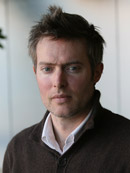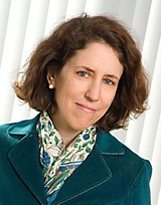Introduction
When seeking truth, our society tends to assume that research results and experimental findings are incontrovertible. Yet scientists themselves are constantly disputing each other’s findings. How can something be considered true while it is actively being tested and revised? It is this paradoxical nature of scientific findings that confront students on entering college.
A recently introduced course in the Program in Science, Technology, and Society, Mapping Controversies, helps students better understand the nature of science through focusing on controversial scientific research.
Educational Need
MIT professor Vincent‐Antonin Lepinay was inspired to offer a course in controversy when his mentor Bruno Latour observed that, “students had a very biased understanding of how science is conducted, because their only exposure was to textbooks… which offered a… purified vision of what science is.”

In response, Latour, Lepinay and his MIT colleague Verena Paravel, along with colleagues at Sciences Po (The School of Political Science) and Centre de Sociologie de l’Innovation Ecole des Mines de Paris (The School of Mines) designed a course that would help students gain better insight into how science really works.
In the course, students were tasked with researching the different perspectives around a topic in the roles of journalists, researchers, statisticians and sciento-metricians. After studying the political, social, and scientific themes that underlie a specific controversy, students would then create a website portraying the topic from all its various facets.
To help guide the students, Lepinay collaborated with OEIT to construct a web directory that would point students to potentially useful sites for learning media response and public opinion on a particular controversy, for exploring tools and resources to help visualize and display the various viewpoints and perspectives, for researching institutions, sites and repositories that contain contextual or historical insight, and for providing a searchable archive for the students to add more resources to the site.
This was the part of the course that Molly Ruggles of OEIT helped with. The current directory of research tools existed in flat file form: not easy to browse, impossible to search, and difficult to enter new data. 
Implementation
Over several months, Ruggles gathered a team of technical project coordinator (herself), research associate, Web developer, Web designer and faculty stakeholder. The team programmed a back-end database and front-end user interface, which allowed the directory to be migrated to a full featured web repository, browse-able from the ‘top down’ through an organized folder hierarchy and searchable from the ‘bottom up’ using keywords in selected fields. The directory was also equipped to grow and evolve in response to additional contributions from students in the class. When a new resource is found, students submit its URL with relevant meta-data, such as source, language, rating, etc. The new resource then becomes a part of the existing repository of materials. Students can also comment on and rate existing tools, giving subsequent visitors to the site enhanced information as to which resources are of value and why.
Through the collective input of students in the class as well as interested researchers in the field, the content of the repository grows with the contributions of it users. Leveraging collective knowledge in this way ensures a dynamic, evolving, and sustainable information repository.
Using the enhanced webdirectory and carrying out the four team functions, the students “followed a controversy through to its publication. The students [were] trained in the skills needed [and] it’s something that students really like because it’s graph theory, it’s about mapping complex data, and even with a small controversy students will assess information from a thousand publications,” says Lepinay.
The students in Mapping Controversies learn that science is as much about the disagreements as about the findings. They see how statements from the controversies emerge in publications and consequently how society interprets those statements. By understanding the real‐world process of scientific controversy, the students develop a more sophisticated view of research, and are thus better able to navigate its nuances and paradoxes.
Next Steps
The course is gaining currency at MIT: Professor Lepinay expects not only more MIT students to enroll in the course but more collaborators internationally. Currently, the course involves the two schools in Paris and MIT, but in the 2008‐2009 academic year will also include Oxford University and Lausanne University. Another possibility is Kaist University in South Korea.
“The network is growing,” says Lepinay.
